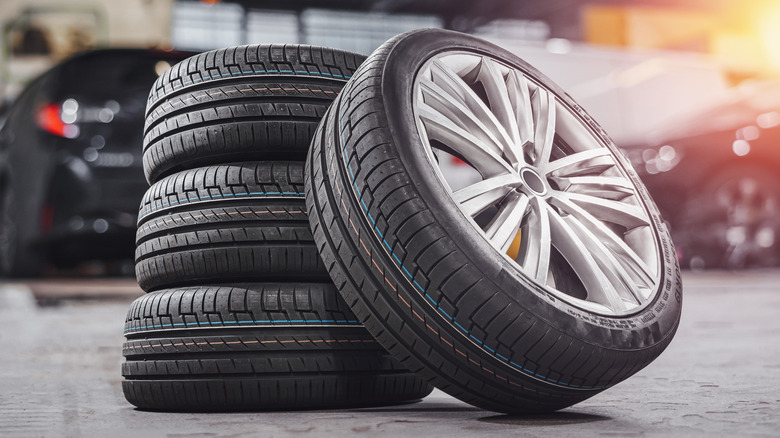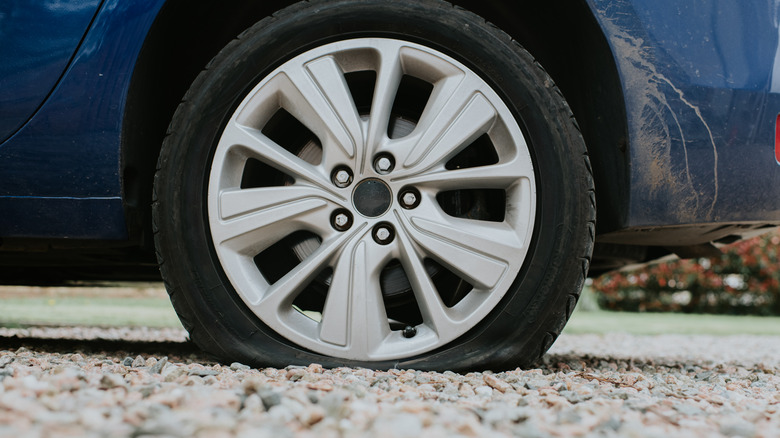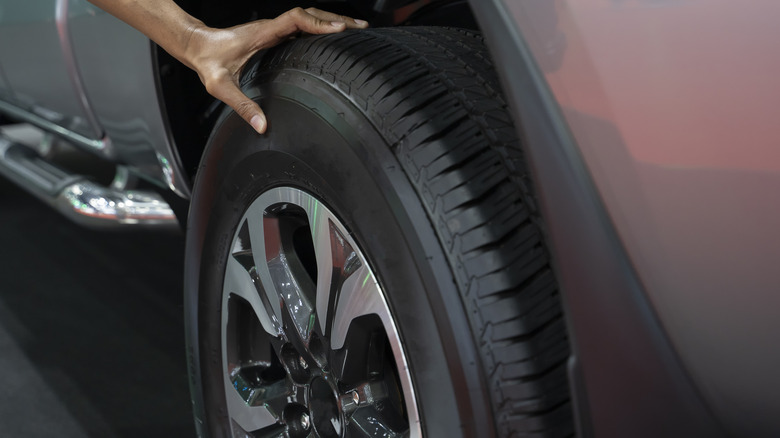Can You Put Two Different Size Tires On Your Car?
There's simply no denying the importance of a good set of tires on your car. They make your vehicle safe to drive, allowing it to find traction on the road surface and cushion your body and your car's internal components on bumpy, uneven roadways. In addition to there being several major tire brands, there are also differing tire sizes, which make certain ones the right choice for certain vehicles. It's for the best that they all match as well.
Theoretically, if a situation calls for such a move, driving with mismatched tires is possible. Maybe you're in an emergency and need to get your car somewhere close by, or you're in a pinch and you happen to have slightly larger or smaller tires on hand to replace busted ones. With that said, sticking with this tire setup for the long term is not at all a good idea. If you think swapping out one or two old, worn-out tires for those of another size just because you have them already will save you money, you'll soon be in for a rude awakening — and a hefty mechanic or, worst case, medical bill. The damage your vehicle and you physically could incur isn't worth the gamble.
Mismatched tires present some serious dangers
Mixing and matching tire sizes on your car isn't a great idea for several reasons. For one, you run the risk of wearing out your differential. This system is designed for brief differences in wheel speed, but different tire sizes mean your wheels are constantly running at different speeds, which isn't sustainable. Worse yet, differing tire sizes can increase wear and tear on other drivetrain elements, the suspension, brake system, and more. Naturally, if you wanted to save money on mechanic fees, simply getting a new set of tires in the first place would be a whole lot cheaper than getting any of those parts sorted out. Unless you're getting ripped off, the average cost of tires isn't anywhere near as financially catastrophic.
As if those consequences on your car's ability to function weren't enough, the drawbacks of driving with two different tire sizes continue. At different weights, tires will wear unevenly, thus running the risk of a blowout. Different sizes mean different levels of traction, which can decrease the vehicle's handling efficiency. Since different-sized tires rotate at different rates, mismatching can create inaccurate speedometer readings. This makes it harder to adhere to speed limits, keep yourself safe, and stay within the parameters of the law.
Getting the correct tire size for your vehicle
There are a few key things to make note of on the tires themselves, such as the tread depth, which directly pertains to the age of your tires and their ability to gain traction. There's a number on each of your tires that you need to check, too, located on the outer wall. The numerals reveal several crucial details about your tires, including their size — something that, as established, should match on all four.
Determining one's tire size is quite simple. All you have to do is look at the series of numbers on the outer wall of your tires, with the first three numbers representing the tire width, from sidewall to sidewall in millimeters, the next two being the aspect ratio, or the tire's height divided by width expressed as a percentage, and the following two standing for the rim diameter. Alternatively, you can consult your vehicle's manual or the doorjamb to find out the necessary info. No matter which avenue you choose, you can now buy your next set of tires confidently.
Actively making a car unsafe to drive is never a good idea, so not driving around on mismatched tires is in anyone's best interest. Instead, do the proper research to know which tires your vehicle needs, and ensure that all four are of the proper size. It could very well save your wallet and life in the long run.


